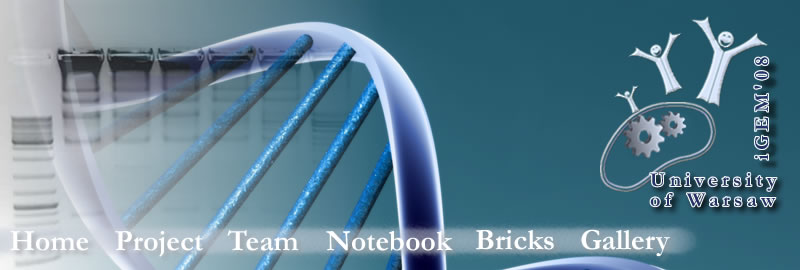Team:Warsaw/Calendar-Main/13 June 2008
From 2008.igem.org
Revision as of 13:25, 19 October 2008 by PPrzanowski (Talk | contribs)
 |
|||||||||||||||||||||||||||||||||
AID in transcription fusion works like AID, but induce slower growth than AID; Optimisation of primers from 10.06Michał K.
Each reaction was carried out with 15 and 20 cycles and in temperature gradient from 55 to 75 degrees.     Gradient PCR products: 1, 14 and 27-DNA ladder;
Gradient PCR products: 1, 14 and 27-DNA ladder; 2 to 8 - gradient PCR for Alpha carried out with 15 cycles; 9 to 16 - gradient PCR for Alpha carried out with 20 cycles; 17 to 23 - gradient PCR for Omega carried out with 15 cycles; 24 to 31 - gradient PCR for Omega carried out with 20 cycles; 32 to 38 - gradient PCR for OmpA carried out with 15 cycles; 39 to 46 - gradient PCR for OmpA carried out with 20 cycles. Product od each variant of PCR is in 7 lanes: 1st is the lower border annealing temperature (55 degrees), 6th is the higher annealing temperature (75 degrees) and 7th is negative control without template DNA.
|
 "
"





